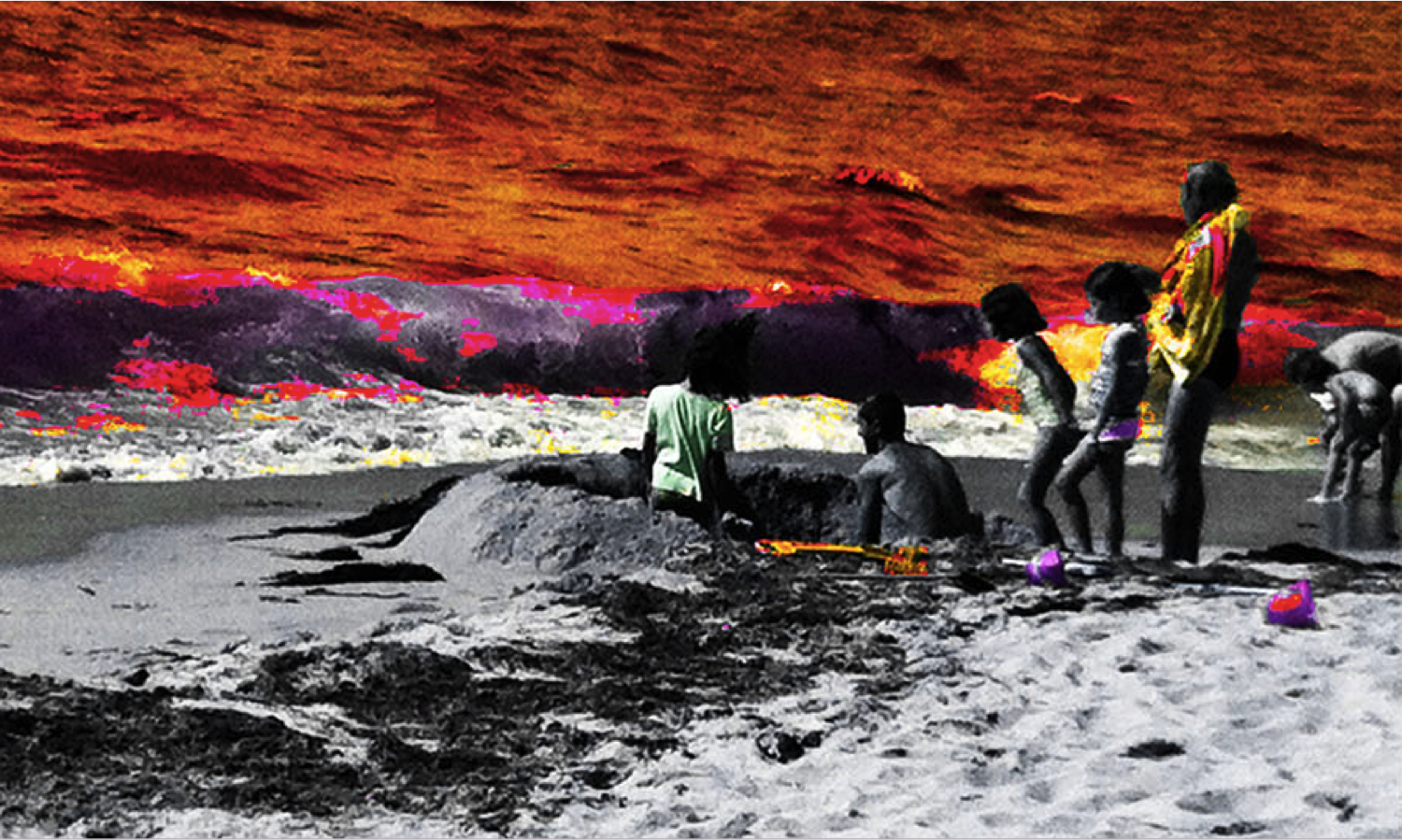Abstract
The text titled “Medusa in red and black. Éliane Chiron’s “numerical painting”, written by Icleia Borsa Cattani, highlights the creative journey of digital painting by the artist and writer Éliane Chiron. He points out that, initially, the artist worked with drawings and paintings, using traditional means, developing an original poietic and poetic style. The properties of the hand, when working, and its own intelligence, the physicality of materials and supports, the qualities of lines and colors, had long been part of Chiron's work. The switch to digital did not happen suddenly. In the 1990s, alongside drawings and paintings, she created videos, performances and installations of great expressive power, in which color constituted a fundamental element. The text mainly illuminates the mythical theme of the figure of the Medusa present in Chiron's work. It also highlights that the plastic qualities of the images are developed and accentuated, creating a visual power derived from the aesthetic strength, in the figures, spaces and the treatment given to them. When working with matter in painting, Éliane Chiron accumulates layers of colors and figures, moving and distorting the whole, until she almost reaches abstraction. Red and black are omnipresent and sometimes end up swallowing the characters, “killing” them symbolically and figuratively
References
ARASSE, Daniel. Histoires de Peintures. Paris: Gallimard, 2006
ART IN CONTEXT. Medusa with the head of Perseus – A fresh take on the Perseus statue. 21.10.2021. Disponível em: https://artincontext.org/medusa-with-the-head-of perseus/#The_Artist_Behind_the_Controversial_Medusa_and_Perseus_Sculpture_Luciano_Garbati. 2021
ART IN CONTEXT. Medusa with the head of Perseus and the Feminist Movement. 30. 08. 2021. Disponível em: https://artincontext.org/#Medusa_with_the_Head_of_Perseus_and_the_Feminist_Movement. 2015
BARTHES, Roland. A Câmara Clara. Rio de Janeiro: Nova Fronteira, 2018
CHIRON, Éliane. A Arte contemporânea sob o risco de Medusa. Organização e tradução de Sandra Rey. Porto Alegre: Editora da UFRGS-PPGAV, coleção Interfaces (no prelo)
CHIRON, Éliane. Íntima mutação da pintura no vídeo digital. Porto Arte n. 31, nov. 2011, p. 41 – 54
CHIRON, Éliane. L’intime du virtuel. La chair et le sang. In : CHIRON, Éliane. L’Énigme du Visible. Paris: Éditions de la Sorbonne, 2013
CHIRON, Éliane. La vidéo numérique ou l’intime révélé de la peinture. Texto enviado por e-mail, de Éliane Chiron à autora, em 15.10. 2021
CHIRON, Éliane. Niki de Saint-Phalle : jardin migrant, chemin mutant. In : CHIRON, Éliane (Org) : Migrations Mutations. Paysages dans l’Art contemporain. Paris: Éditions de la Sorbonne, 2010
CHIRON, Éliane. Spiral Jetty. Le rouge en souffrance. In : Chiron, É. (Org). X, L’Oeuvre en Procès. Croisements des Arts, V. II. Paris : Cerap – Publications de la Sorbonne, 1997
CIXOUS, Hélène. Le Rire de la Méduse et autres ironies. (1975) Paris: Galilée, 2010
ERNST, Max; BRETON, André. La Femme 100 têtes. Paris: Les Éditions du Carrefour, 1929
FREUD, Sigmund. A cabeça da Medusa. In: FREUD, S. Além do princípio de prazer, psicologia de grupo e outros trabalhos. Rio de Janeiro: Imago, 1996
FRONTISI-DUCROUX, Françoise. Andromède et la naissance du Corail. In: GEORGOUDI, Stella; VERNANT, Jean-Pierre. Mythes Grecs au figuré. Paris: Gallimard, 1996.
GEUNA, Elena (Curadora); HIRST, Damien. Treasures of the wreck of the Unbeliveable. Veneza: Marsilio Editori, Londres: Other Criteria, 2017.
HARRISON, Jane Ellen. Prolegomena to the Study of Greek Religion. (1903) Princeton, Princeton University Press, 1991.
HESÍODO. Teogonia. A origem dos Deuses. Estudo e tradução de Jaa Torrano. São Paulo: Iluminuras, 1991.
HILGERT, Luiza Helena. O Arcaico do Contemporâneo. Medusa e o mito da mulher. Revista lampião, v. 1, n. 1 (2020), p. 41 - 70
HOFFMANN, Werner. (Curador) Zauber der Medusa: Europaische Mannierismen. Hamburgo: Hamburger Kunsthalle, 1987.
HOMERO. Ilíada. Tradução de Christian Werner. São Paulo: Ubu Editora, 2018.
HOMERO. Odisséia, II. Regresso. Tradução de Donaldo Schuller. Porto Alegre: L&PM Edições, 2014.
JOBIM LOPES, Anchyses. Cabeça de Medusa: de Caravaggio a Freud e Lacan. Sobre Pintura e Psicanálise. Estudos de Psicanálise, Belo Horizonte, n.51, jul. 2019. P.25 - 46
KAROUGLOU, Kiki. (Curadora) Dangerous Beauty. Medusa in Classical art. New York: Metropolitan Museum of Art, 2018.
KRISTEVA, Julia. (Curadora) Visions Capitales. Paris: Réunion des Musées Nationaux, 1998.
MEZAN, Renato. A Medusa e o telescópio ou Verggasse 19. In: NOVAES, Adauto (Org.) O Olhar. São Paulo: Companhia das Letras, 1988
OVÍDIO. Metamorfoses. São Paulo: Editora 34, 2021. Tradução, introdução e notas de Domingos Lucas Dias
QUIGNARD, Pascal. Le Sexe et l’effroi. Paris : Gallimard, 1994
SHONIBARE, Yinka. The world has become more difficult to represent. Interview. Disponível em: https://www.randian-online.com/wp-content/uploads/2015/05/ Shonibare_Rage-of-the-Ballet-Gods_2015
VERNANT, Jean-Pierre. A Morte nos olhos. Figuração do Outro na Grécia Antiga: Ártemis e Gorgô. Rio de Janeiro: Jorge Zahar editor, 1988.
VERNANT, Jean-Pierre; VIDAL-NAQUET, Pierre. Mythe et tragédie en Grèce ancienne. Paris: Edições François Maspéro, 1972

